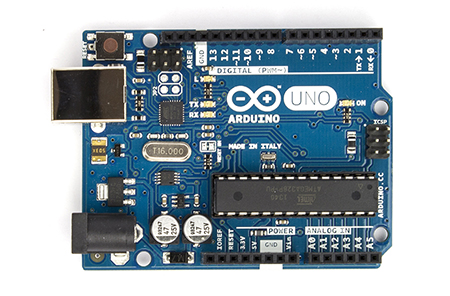Curious about some of the projects and technologies that Elektor was covering in past July editions? Let's take a look. Some of the most interesting articles are freely available until August 31, 2021, for non-members. Of course, if you are an Elektor Gold or Green member, you can access all the back editions available in the languages of your choice. Enjoy!
Stepper Motor Generator
In July 2000, we featured stepper motor generator by Burkhard Kainka. In the article, he explains that any stepper motor can be used as a generator. In contrast to other generators, a stepper motor produces a large induced voltage even at low rotational speeds. The type used here, with a DC resistance of 2×60 Ω per winding, can generate more than 20 V when turned by hand, without any gearing. The circuit diagram for a ‘hand-cranked torch’ shows how you can use a stepper motor as a generator. Read more

Stepper motor generator
Grid Dipper
In July 1996, Luc Lemmens presented a handy design — the grid dip meter, or "dipper." Its main function was to determine the resonance frequency of unknown tuned circuits within a certain range (1.5 to 80 MHz in this case). The dipper doubled as an RF signal generator and an absorption frequency meter. Some amateurs were even able to use it to repair radios or tune short-wave antennas. Read more

The "Grid Dipper"
NiCad Charger
Way back in July of 1980, we presented a DIY NiCad charger. The simple circuit offers low dissipation and provides a constant current for the cells to be charged. It incldues two capacitors connected in paralle (instead of the usual transformer) to obtain sufficient current (a tenth of the batteries' capacity, or 50 mA) from the mains supply. The voltage at the "cool" end of the capacitors is then rectified by means of four diodes. The LED indicates when the circuit is charging. The resistors (R1 and R2) are included for safety. Read more

NiCad charger
Twin Dimmer
Decades ago, Elektor engineers and readers were already designing many of the electronics that today we take for granted. For example, this dimmer circuit featured in 1985 offers two independent controls in one. Control of each section of the circuit is provided by a type S576, which is an improved version of the S566. This type of IC controls the phase gating by short or long command pulses emanating from a touch pad. Pulses shorter than 60 ms are treated as noise. Short pulses between 60 ms and 400 ms cause the lamp to be switched on or off, depending on whether it was off or on respectively. If the touch pad is touched for more than 400 ms, the appropriate lamp is dimmed at a certain speed. If the finger is held on the touch pad, the lamp will go out completely and will then slowly light up again: when it reaches full brightness (and the finger is still on the pad), it will begin to dim again, and so on. Read more

Twin dimmer
More Engineering to Come
Stay tuned for more classic Elektor projects and engineering tutorials. In August 2021, we'll highlight some of the most interesting articles from the past 60 years. The engineering continues!




